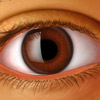How Smoking Affects the Eyes
 Introduction to smoking and eye health
Introduction to smoking and eye health- What is tobacco smoke?
- What conditions are associated with exposure to tobacco smoke?
- Preventing tobacco smoke associated eye disorders
Introduction to smoking and eye health
It is well known that the tobacco smoke generated by smoking a cigarette, pipe or other tobacco product can cause damage to the individual who is smoking, and also to the people exposed to the smoke.
The health conditions most commonly associated with tobacco smoke exposure are cancers and cardiovascular disorders. However, there is now a significant body of evidence showing an increased risk of a number of eye disorders, not only in those who smoke, but also in those who are frequently exposed to tobacco smoke.
What is tobacco smoke?
Tobacco smoke is the smoke generated from smoking tobacco. There are two types of tobacco smoke:
|
Tobacco smoke contains over 4,000 substances, including many known carcinogens, irritants and inflammatory agents.
What conditions are associated with exposure to tobacco smoke?
While children do not typically smoke cigarettes (at least until adolescence), many are exposed to environmental tobacco smoke, either because their parents smoke at home or in the car, or because they find themselves in environments where adults are smoking. This is commonly known as passive smoking.
Passive smoking has negative effects on the eyes of children exposed to tobacco smoke. The eye diseases and conditions associated with exposure to tobacco smoke in children include:
Strabismus is a condition in which the eyes become misaligned (e.g. crossed eyes). Maternal smoking during pregnancy is associated with a 6.55 times increased risk of strabismus amongst children.
Allergic conjunctivitis isa condition in which the conjunctiva becomes inflamed due to the presence of an allergen.While no studies have been conducted specifically to assess the relationship between allergic conjunctivitis and tobacco smoke exposure, a number of studies of allergic reactions in children have reported that the risk of developing allergic conjunctivitis increased by about 20% in children who are exposed to environmental tobacco smoke.
 In adults, smoking cigarettes is associated with the following eye diseases and disorders:
In adults, smoking cigarettes is associated with the following eye diseases and disorders:
There is strong evidence that smoking particularly pipe smoking increases the risk of cataracts (clouding of the lens of the eye).A review of 27 studies examining the association between cigarette smoking and cataract reported a 3 times increased risk of nuclear cataract, and also evidence of an association between smoking and subcapsular posterior cataract. While studies have not yet demonstrated an association between environmental tobacco smoke exposure and cataract, it remains a potential risk factor.
 | For more information on cataracts, including the effect of smoking, exercise and nutrition on eyes, as well as some useful animations and tips to keep eyes healthy, see Cataracts. |
Uveitis is a condition characterised by inflammation of the uvea (middle section) of the eye. While no studies have been conducted in humans, laboratory studies using rats have determined that endotoxin (a chemical found in tobacco smoke) can induce an inflammatory response and acute uveitis. Thus it is plausible that tobacco-smoke exposure can increase the risk of uveitis in smokers and those exposed to environmental tobacco smoke.
Age related macular degeneration
Smoking is a clearly established risk factor for age related macular degeneration (the deterioration of vision with age). Data from three large cross-sectional studies estimated a 3 times increased risk of age related macular degeneration in smokers compared to nonsmokers.
A review of studies examining the association between age related macular degeneration and smoking reported that smoking actually causes age related macular degeneration, rather than justbeingindirectly associated with the condition. That review also reported that the more people smoked, the more likely they were to develop age related macular degeneration.
The association between environmental tobacco smoke exposure and age related macular degeneration is less clear, and studies to date have presented conflicting results. These conflicting results may be because each of the studies used a different definition of passive smoking.
 | For more information on age related macular degeneration, including the effect of smoking, exercise and nutrition on eyes, as well as some useful animations and tips to keep eyes healthy, see Macular Degeneration. |
Graves’ ophthalmopathy (thyroid eye disease)
Graves’ ophthalmopathy, also called thyroid eye disease,is a condition characterised by inflammation of the eye and fat in the eye socket. Studies have provided strong evidence of an association betweenthyroid eye disease and how much an individual smokes. Smokers with thyroid eye disease had poorer outcomes than nonsmokers. Data suggests that environmental tobacco smoke exposure increases the risk of Graves’ ophthalmopathy, although the data is limited.
Smoking has been linked to an increase in disorders of the eye’s ocular surface which result in symptoms such as itchness, redness and irritation of the eyes. Changes to the eye’s ocular surface associated with smoking include changes to the lipid layer of the tear film, reduced tear secretion and reduced corneal and conjunctival sensitivity. Passive smoking can also increase the risk of these disorders. Ocular surface disorders include atopic keratoconjunctivitisand allergic conjunctivitis.
Preventing tobacco smoke associated eye disorders
Reducing or eliminating exposure to environmental tobacco smoke and stopping smoking are the key ways to prevent tobacco smoke associated eye disorders.
 | Have you quit smoking? Or are thinking about trying to quit? Use this tool to see what health benefits you have already achieved and what benefits you can expect in the future if you stick with it. For more information, see Health Benefits of Quitting Smoking Tool. |
[calc_smok]
More information
 | For more information on smoking, its health effects and how to quit smoking, as well as some useful tools, videos and animations, see Smoking. |
References
- Lois N, Abdelkader E, Reglitz K, et al. Environmental tobacco exposure and eye disease. Br J Ophthalmol. 2008;92(10):1304-10. [Abstract]
- Stone RA, Wilson LB, Ying GS, et al. Associations between childhood refraction and parental smoking. Invest Ophthalmol Vis Sci. 2006;47(10):4277-87. [Abstract | Full text]
- Cumming RG, Mitchell P. Alcohol, smoking and cataracts: The Blue Mountains Eye Study. Arch Ophthalmol. 1997;115(10):1296-303. [Abstract | Full text]
- Kelly SP, Thornton J, Edwards R, et al. Smoking and cataract: Review of causal association. J Cataract Refract Surg. 2005;31(12):2395-404. [Abstract]
- Smith W, Assink J, Klein R, et al. Risk factors for age related macular degeneration: Pooled findings from three continents. Ophthalmology. 2001;108(4):697-704. [Abstract]
- Thornton J, Edwards R, Mitchell P, et al. Smoking and age-related macular degeneration: A review of association. Eye. 2005;19(9):935-44. [Abstract | Full text]
- Klein R, Klein BE, Linton KL, DeMets DL. The Beaver Dam Eye Study: The relation of age-related maculopathy to smoking. Am J Epidemiol. 1993;137(2):190-200. [Abstract]
- Smith W, Mitchell P, Leeder SR. Smoking and age-related maculopathy. The Blue Mountains Eye Study. Arch Ophthalmol. 1996;114(12):1518-23. [Abstract | Full text]
- Khan JC, Thurlby DA, Shahid H, et al. Smoking and age related macular degeneration: The number of pack years of cigarette smoking is a major determinant of risk for both geographic atrophy and choroidal neovascularisation. Br J Ophthalmol. 2006;90(1):75-80. [Abstract | Full text]
- Thornton J, Kelly SP, Harrision RA, Edwards R. Cigarette smoking and risk of thyroid eye disease: A systematic review. Eye. 2007;21(9):1135-45. [Abstract | Full text]
- Edwards R, Thornton J, Ajit R, et al. Cigarette smoking and primary open angle glaucoma: A systematic review. J Glaucoma. 2008;17(7):558-66. [Abstract]
Related diseases and conditions
Dates
Tags
Created by:

 Login
Login














